NYC’s Forgotten ‘War on Christmas Trees’
Discover how an obscure holiday crackdown affects festive street vendors today!


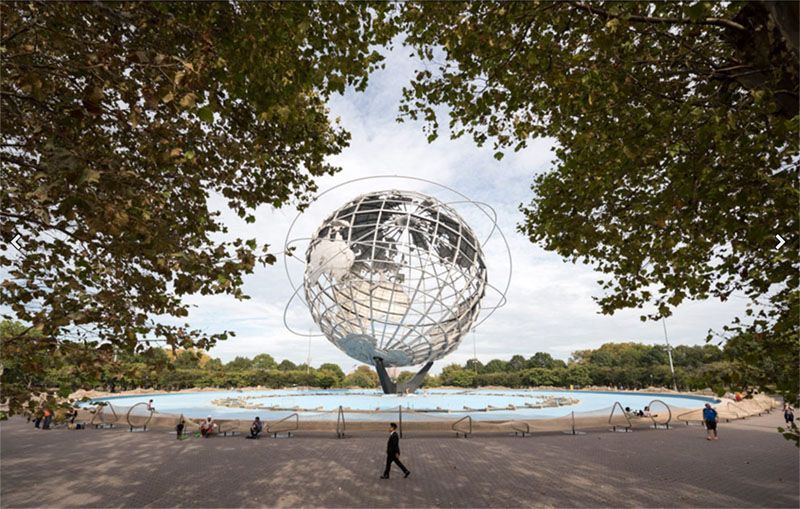
Photo by Timothy Schenck, courtesy of the Public Art Fund
The Public Artist Fund is closing out its 40th anniversary year with Good Fences Make Good Neighbors, an exhibition stretching all five boroughs, by artist and human rights activist, Ai Weiwei. The citywide art installation transforms a security fence into an artistic symbol of the international migration crisis and the current geopolitical landscape.
The exhibition will run from October 12, 2017 to February 11, 2018, and includes over 300 sites across New York City including flagpoles, lampposts, and bus shelters. Here are 10 places you can view the various installations:

Photo by Jason Wyche, courtesy of the Public Art Fund.
Located at the Doris C. Freedman Plaza in Central Park, Gilded Cage is a free-standing installation that transforms a fence into a golden, cage-like sculpture. Visitors are able to walk into and around the structure, allowing them to contrast the openness and freedom of the vast park with the structures of division found within the cage.
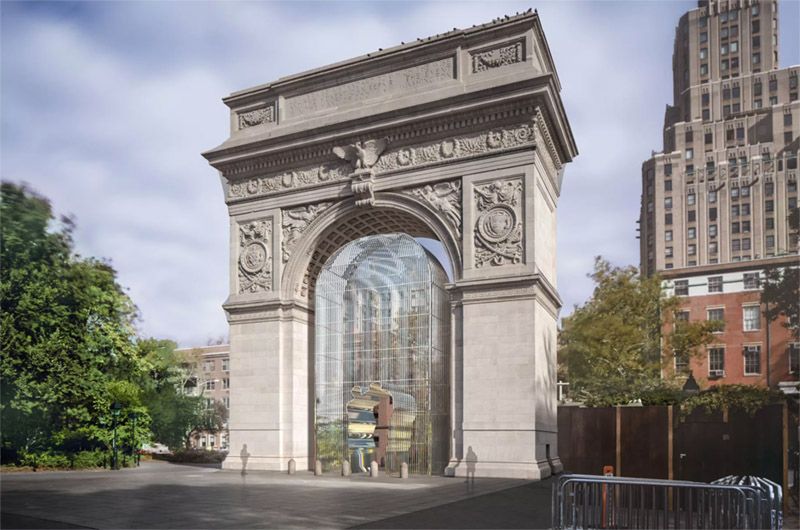
Image by Ai Weiwei Studio/Frahm & Frahm
Arch at the Washington Square Arch in Greenwich Village is a 40-foot-tall structure located within one of the most frequented social and political hubs in New York City. Sitting underneath the arch, the piece is comprised of two united and mirrored silhouettes, which serve as a passageway for visitors.
“The triumphal arch has been a symbol of victory after war since antiquity,” said Ai Weiwei. “The basic form of a fence or cage suggests that it might inhibit movement through the arch, but instead a passageway cuts through this barrier – a door obstructed, through which another door opens.”

Photo by Timothy Schenck, courtesy of the Public Art Fund
Circle Fence at Flushing Meadows-Corona Park in Queens is located in one of the most diverse areas in New York City. This structure, composed of mesh netting, surrounds the Unisphere without visibly blocking it, thus emphasizing its symbolic meaning.
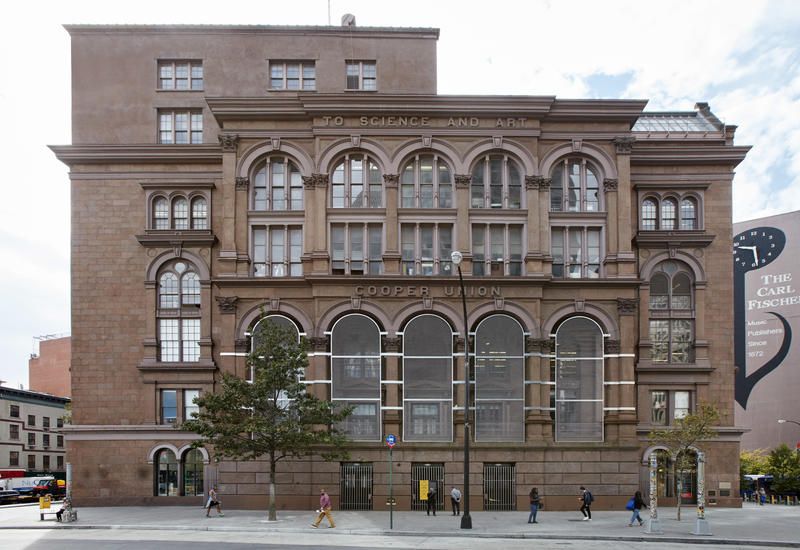
Photo by Jason Wyche, courtesy of the Public Art Fund.
Several sites on the Lower East Side, an area with a rich history of immigration, will feature “subtle interventions” by Ai Weiwei. Five Fences at The Cooper Union for the Advancement of Science and Art uses five fences to fill the arches on the facade of the Foundation Building, known as a mecca for democracy and education. According to Public Art Fund, “Five Fences suggests that the logic of social division is often opportunistic and incremental, emerging from and adapting itself to existing conditions.”
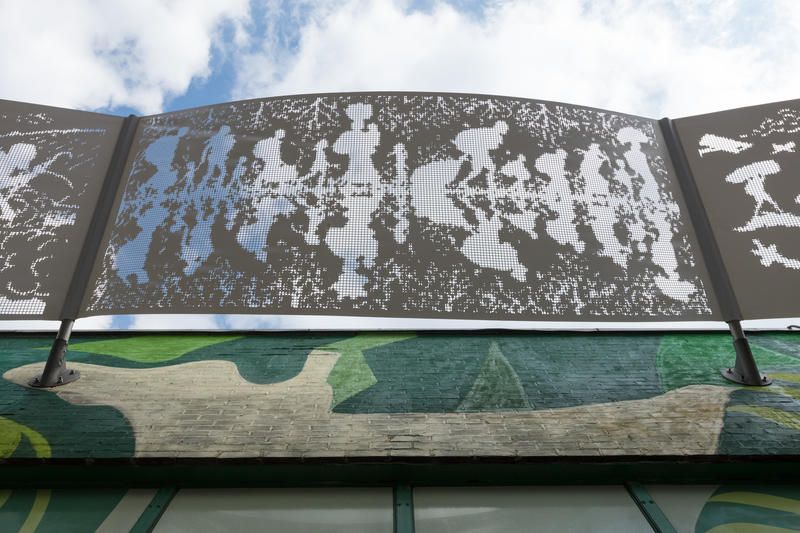
Image by Ai Weiwei Studio, Courtesy of Public Art Fund
For Exodus, banners are spread across the flagpoles on the outside of Essex Street Market, established in the 1940s. The banners depict photos taken by Ai Weiwei during his travels to 23 countries; they showcase various threats to survival faced by refugees as well as the hope that drives them forward.
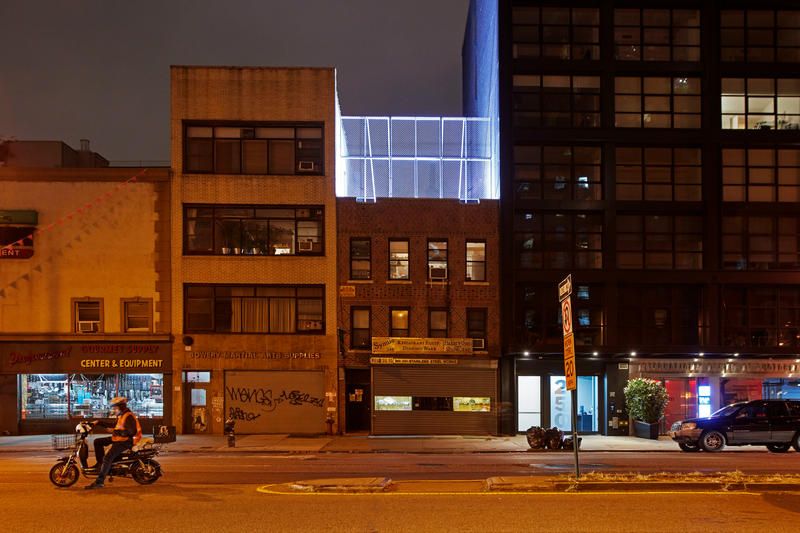
Photo by Jason Wyche, courtesy of the Public Art Fund.
Located at 248 Bowery on the Lower East Side is the Bowery Fence, constructed above a historic, 1830s building. This is a part of a series of Weiwei’s work on lower lying buildings, meant to bring attention upward towards their architecture.
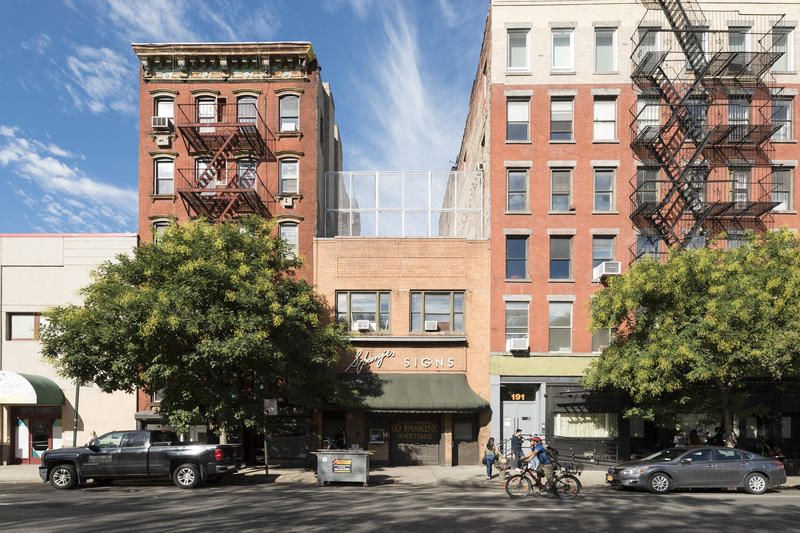
Photo by Timothy Schenck, courtesy of the Public Art Fund
Chrystie Street Fence at 189 Chrystie Street on the Lower East side is located on another low rising building, which was once a sign factory in the 1920s. Today, it’s home to a burlesque nightclub, known as The Box.
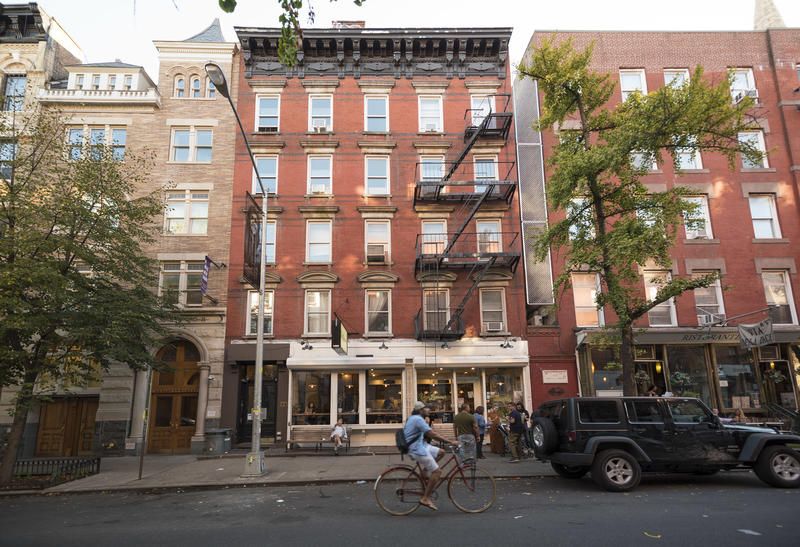 Photo by Timothy Schenck, courtesy of the Public Art Fund
Photo by Timothy Schenck, courtesy of the Public Art Fund
7th Street Fence is located on 48 East 7th Street in the East Village, the same street where, in the 1980s, Ai Weiwei lived in a basement apartment when he was a student and immigrant. This fence fills the space between two buildings.
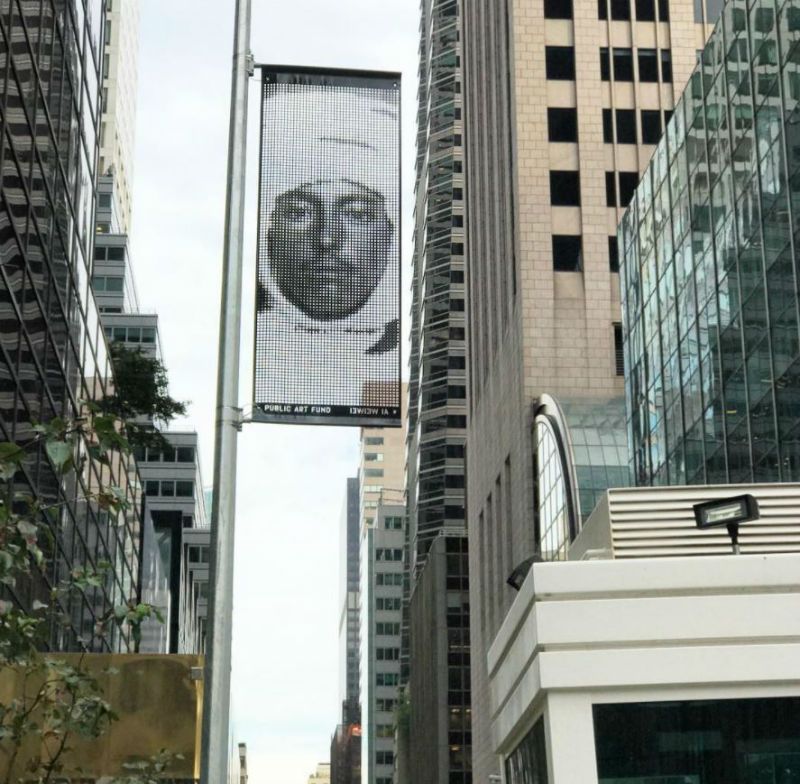
Photo via Public Art Fund Instagram
Banner 2, located on 56th Street, is one of 200 two-dimensional lamp post banners, which can be found throughout the city. They feature photographs of immigrants from different time periods.
The banner above depicts an image by Augustus Sherman, an amateur Ellis Island photographer who captured several photographs of immigrants between 1892 and 1954.
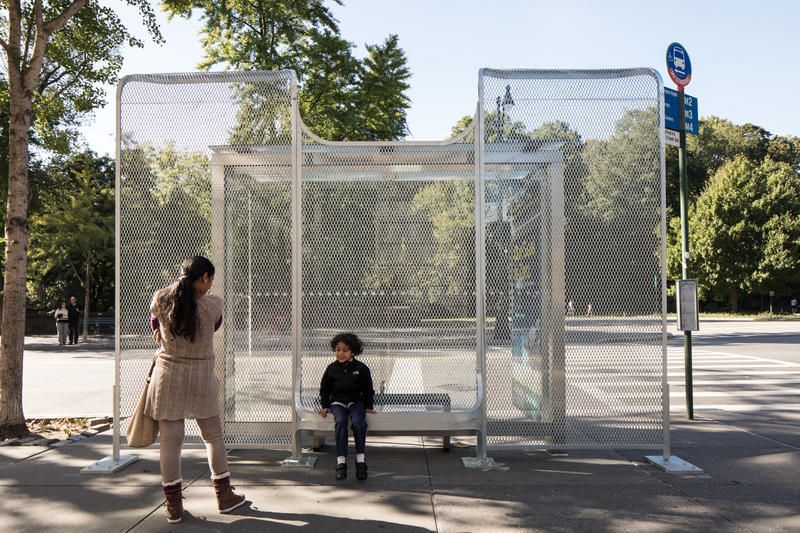
Image by Ai Weiwei Studio, Courtesy of Public Art Fund
Harlem Shelter 1 is one of ten fences Ai Weiwei constructed around bus shelters in Brooklyn, Harlem, and the Bronx. These structures are intended to “highlight the fundamental human right of free movement,” according to Ai Weiwei. In an effort to call attention to issues facing displaced people, he has also created images to be placed on other bus shelters throughout the city, in addition to the lampposts.
The images, placed in areas usually dedicated to advertising, are pulled from his new documentary Human Flow, which is the culmination of a year and a half of work, when he traveled to 23 countries and more than 40 refugee camps.
Check out all these spots for highlights of Ai Weiwei’s “Good Fences Make Good Neighbors.” Next, check out Fun Maps: NYC Conservancy Makes Fall Foliage Map and 17 Art Installations and Exhibits in NYC Not to Miss in October.
Subscribe to our newsletter